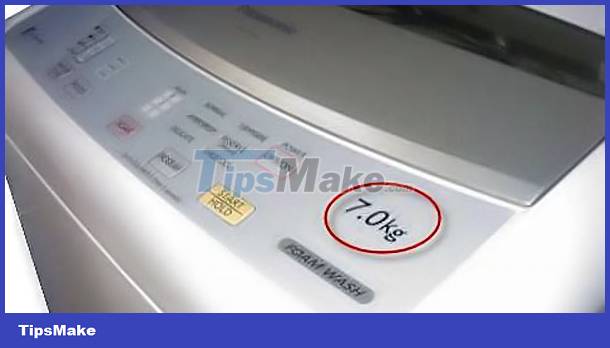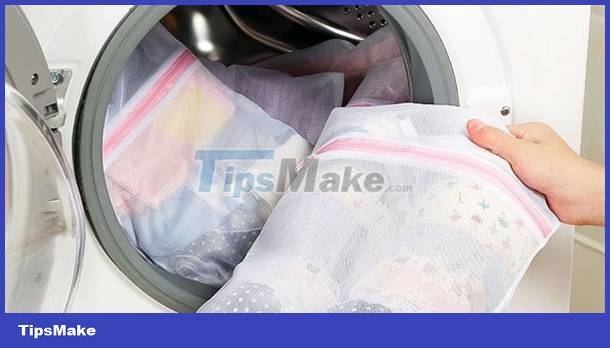Things to know when using a washing machine
Currently, the use of washing machines is like other household appliances because most washing machines have automatic control functions. However, if you want to use the washing machine properly to clean clothes and help maintain the washing machine well, you need to know how to use the washing machine according to the manufacturer's instructions for use.
 Things to know when using a washing machine
Things to know when using a washing machine
The following notes will help you use the washing machine properly
first
Always read the manual before using the washing machine
Each washing machine will have a different structure and operating mode, so the first thing you need to do is read the manual carefully before using it. The manual is always included with the machine, if lost, you can contact the seller or visit the manufacturer's website to read or download the user manual.
2
Do not exceed the allowable load of the washing machine
 Do not exceed the allowable load of the washing machine
Do not exceed the allowable load of the washing machine
On each washing machine is printed the maximum weight (Kg) of clothes allowed in each wash. If you wash more than this allowable amount, not only will the washing not be clean, but it will also reduce the life of the washing machine.
If you are not sure, you can temporarily calculate the average weight of adult clothes as follows: Shirts and T-shirts usually weigh about 0.2kg/piece; Trousers weigh about 0.4kg/piece and jeans weigh about 0.6kg/piece.
In addition, you can also estimate according to your experience in the washing process to be able to achieve high efficiency.
3
Use the right washing powder or liquid detergent for washing machines and use the right dosage
 Use the correct detergent or liquid for washing machine
Use the correct detergent or liquid for washing machine
On the packaging of washing powders or detergents used for washing machines, it will clearly state whether they are used for top load washing machines - Top Load or front loading - Front Load. Using the right detergent or liquid for washing machines will help achieve the best results.
In addition, on the packaging of washing powder or washing liquid, there are instructions on how to use the correct dosage when washing. If you add less, it will not wash the clothes, on the contrary, if you add too much, the soap may not be fully rinsed.
4
Check the items in the bag of clothes before washing
Before putting your clothes in the washing machine, check to make sure that metal objects such as hairpins, pins, coins, etc. are not left in the laundry, as they will cause squeaks and noises. may jam the machine or tear the clothes.
When washing curtains, you need to remove the hooks or tie them in a bag or net. Tie up long cords and pull on fasteners on clothes as they can damage the laundry or the drum when opened.
In addition, miscellaneous items left in the laundry can also clog the drain pipe.
5
Be careful while using the washing machine
When the washing machine is in operation, do not put your hands in the drum or reach into the bottom of the washing machine, the rotating parts may cause injury to you.
Do not let children play on or in the washing machine, do not let children play with the washing machine while it is in operation.
Do not splash or spill water on the control panel as this may cause short circuit, damage or malfunction of the washing machine.
The washing machine has an automatic mechanism that calculates the amount of water needed for washing, so you should not use a bucket or separate faucet to supply water to the washing machine.
Some families have a habit of washing first by hand and then putting it in the machine to wash or spin, then it is necessary to pay attention to avoid water falling from the clothes into the control circuit and should spread the laundry evenly in the machine, avoiding deviation to one direction. corner.
6
Use automatic washing mode
Currently, most washing machines have an automatic mode or often called a smart washing mode, you should use this mode because it has been programmed to wash well for common cases.
In the automatic washing mode, the washing machine will check itself for the weight of the clothes and add the appropriate amount of water to the machine then apply the appropriate pre-programmed wash programs.
7
Pay attention to the fabric types of clothes when washing
 Use mesh bags to protect delicate clothes when machine washing
Use mesh bags to protect delicate clothes when machine washing
Depending on the type of clothes, choose the appropriate washing mode. High-grade fabrics such as silk should choose a gentle washing mode; Normal clothes choose medium mode, only thick clothes like Jean, Kaki, . will use strong washing mode.
Normally, clothes with synthetic fibers or silk, hair should be washed about 2-4 minutes; Normal clothes wash 6-8 minutes; If the clothes are too dirty, wash them for 10-12 minutes. Then switch to discharge mode. Shortening the reasonable use time in addition to saving electricity, water also prolongs the life of both clothes and machines.
Clothes such as wool, thin elastic, easy to stretch, etc. should not be machine washed because these types cannot withstand friction, bracing and pulling. Similarly, high-grade fabrics should not be machine washed, which can cause clothes to become frayed and silver due to strong friction.
See the manual Meaning of laundry symbols
If the clothes are too dirty, soak them in water for about 20 minutes, scrub the collars, then put them in the machine. The weight ratio of water and clothing is 20:1 in eco mode. It is recommended to use washing powder or detergent with low foam but with high cleaning power when washing by machine. This makes flushing quickly clean and can save 1-2 times water.
Clothes that have a lot of gasoline or oil on them should not be put in the washing machine. Clothes that have been bleached with gasoline should also not be machine washed, as this may cause a fire, damage the machine or damage other clothes.
When washing clothes with glitter, underwear, nylon and thin synthetic fibers, it is recommended to use a nylon washing net for protection, which is commercially available. For laundry with wool, or with lint, turn it inside out.
8
Use the washing machine properly
With conventional top load washing machines, you should not use hot water above 50°C because hot water can deform the plastic parts in the machine.
If washing with warm water is required, the most suitable temperature for washing machines is 40°C. At this temperature, the detergent will penetrate the clothes well and pull the dirt out. If the water is too hot, it will cause the clothes to be deformed, wrinkled, and lose elasticity.
The time to use the washing machine should not be prolonged, avoid washing continuously from batch to batch.
If the machine is hot or makes strange noises, immediately stop washing again to check.
Some washing machines can restart themselves and resume washing after a power outage, in which case you do not need to turn the machine off and on again.
The indicator light system on the washing machine will indicate what mode the machine is in and how much time is left, you can take advantage of other work. After the washing machine is finished, there will be a music signal to let you know.
For front-loading washing machines, when operating, the door will be locked tightly, you cannot open it to add more clothes.
See instructions on Care and cleaning of the washing machine
You should read it
- Tips to help wash clothes without wrinkles when washing with washing machines
- Does the washing machine make your clothes durable?
- 15 common mistakes people make when using washing machines
- 5 uses of a facial cleaner compared to facial scrubs
- 9 common mistakes when using washing machines and how to fix them
- Learn smart features on Samsung Addwash washing machine
- [Compare] Should I buy a LG or Electrolux washing machine?
- Top 5 cheap washing machines for students and boarders
- Stay away from this if you don't want your washing machine to fail quickly
- How to use washing machine durable and effective?
- 13 common errors in washing machines, causes and solutions
- Should dirty clothes be immediately put into the washing machine?






 It is not difficult to remove unpleasant odors in the washing machine
It is not difficult to remove unpleasant odors in the washing machine Washer errors and how to fix them
Washer errors and how to fix them Should buy a good washing machine affordable price
Should buy a good washing machine affordable price Stay away from this if you don't want your washing machine to fail quickly
Stay away from this if you don't want your washing machine to fail quickly How to use washing machine durable and effective?
How to use washing machine durable and effective? The necessary precautions when using a front-loading washing machine
The necessary precautions when using a front-loading washing machine